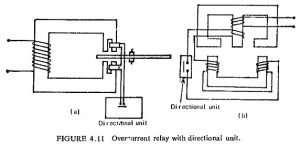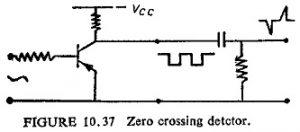Relay Classification in Power System Protection:
There are various types of Relay Classification in Power System Protection. Normally the actuating quantity is an electrical signal, although sometimes the actuating quantity may be pressure or temperature. The electrical type of protective relays can be classified in a number of ways.
(1) According to the function in the protective scheme, relays may be divided into
- Main relays
- Auxiliary relays and
- Signal relays.
Main Relays: The main relays are the protective elements which respond to any change in the actuating quantity, e. g. current, voltage, power, etc.
Auxiliary Relays: The auxiliary relays are those which are controlled by other relays to perform some auxiliary function such as introduction of a time delay, increasing the number of contacts, increasing the making or breaking capacity of the contacts of another relay, passing a signal from one relay to another, tripping of circuit breaker, energizing a signal or an alarm, etc.
Signal relays: Signal relays function to register the operation of some relay by, flag indication, simultaneously it can also actuate an audible alarm circuit. The choice of signal relay depends upon the importance of the associated switchgear, the method of control and the number of alarm indications to be displayed.
(2) According to the nature of actuating quantity to which the relay responds: current, voltage, power, reactance, impedance, frequency, and the direction of the change they respond to. Such relays are differentiated as over and under relays. Relays which respond to the actuating quantity when it exceeds a predetermined value are overrelays and if they operate when the value of the actuating quantity drops below a predetermined value, they are known as underrelays. Hence an overcurrent relay is one which operates when the value of current exceeds a predetermined value and an under voltage relay is one which operates when the voltage falls below a particular level.
(3) According to the connection of sensing element primary relays are those whose sensing elements are directly connected in the circuit or element they protect, and secondary relays are those whose sensing elements are connected through a current or voltage transformer. Normally secondary relays are used in power system protection because of the high values of line voltages and currents.
(4) According to the method by which the relays act upon the circuit breaker relays are divided into direct acting relays whose control element acts mechanically to operate a circuit breaker and an indirect acting relay whose control element switches in the auxiliary power source to operate the circuit breaker.
Generally speaking the electrical protective relays can be broadly classified into two categories:
- electromagnetic relays,
- static relays.






